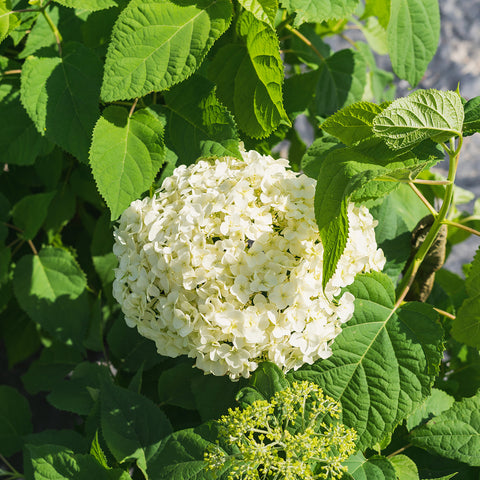Why Is My Hydrangea Wilting?
With well-drained soil, ample water, and partial or direct exposure to sunlight for 6 – 8 hours every day, your hydrangea is bound to bloom beautifully! Occasionally, you will have a year with fewer hydrangea blooms or blooms that don’t last for long. Find out why your hydrangea is wilting.
Best Selling Hydrangeas
Where Do Hydrangeas Grow?
According to the U.S. Agriculture Department, these plants will have no trouble growing in hardiness zones from 3 – 9. Even if you do not have a lot of growing space, these precious plants grow quickly by developing efficient root systems that do not spread too wide. They can be contained in pots or allowed to grow wild in garden beds. Ideal for decorating your outdoor living space or garden, growing the hydrangea plant will do you an aesthetic favor!Why Is My Hydrangea Plant Wilting/Drooping?
Hydrangea is a plant that is not particularly vulnerable to plant diseases and infestations. However, this plant is incredibly sensitive to the physical characteristics of its growing conditions, such as light intensity, temperature fluctuations, availability of moisture, and acidity of the soil it is growing in.Too much exposure to full sun for long hours and lack of moisture can cause your hydrangea stems to weaken and touch the ground. Drooping and wilting is your hydrangea plant’s way of saying that it is not doing too well and needs your attention!
Here Are a Few Reasons Why Your Hydrangea Is Wilting:
Hydrangea Heat Stress
Heat and drought stress can cause the stomata of your hydrangea plant to remain open as they try to absorb water vapor from the environment that they are in. Unfortunately, this causes water to be lost more than it is gained which over time translates into wilting. Heat Damaged Hydrangea Being responsive to heat, your hydrangea shrub will begin drooping when there is a slight rise in temperature. However, if you notice that by evening your hydrangea has not returned to its perky self, then it is suffering from serious heat stress. Installing drip irrigation can help your hydrangea hydrate itself better if you cannot change its growing location.
Heat Damaged Hydrangea Being responsive to heat, your hydrangea shrub will begin drooping when there is a slight rise in temperature. However, if you notice that by evening your hydrangea has not returned to its perky self, then it is suffering from serious heat stress. Installing drip irrigation can help your hydrangea hydrate itself better if you cannot change its growing location.
Insufficient Light
On average, your hydrangea’s light requirements will need at least 6 – 8 hours of sunlight every day. However, this figure may vary depending on how far up north your growing space is located. Ideally, you will want to give these plants direct sunlight in the morning and afternoon followed by partial sunlight or shade in the evening.Continuous lack of sunlight over long periods can make your hydrangea plant’s foliage appear weak, dried out, and flaccid. Do not attempt to revive wilting by keeping your hydrangea in direct sunlight. Doing so can cause sunburn along with dehydrating your plant further. Instead, shift your hydrangea plant to a location where it can get a moderate amount of sunlight for 6 hours daily.
Dehydration
Your hydrangea plant may be wilting because your plant’s water requirements are not being met. These plants thrive in moist soils and humid atmosphere with an occasional misting to pamper them. Dry weather, crusty soil that does not retain water for long enough, and irregular watering schedules can dehydrate your hydrangea plant. Here are tips and tricks to overcoming your parched hydrangea plant:- Add organic matter to improve your soil’s moisture retention. Compost and animal manure can introduce nutrients to your garden soil along with assisting your plants in feeling less thirsty.
- Balance the sun and shade hours for your hydrangea plant. Extended periods of sunshine and heat can cause your plant’s stomata to engage in unnecessary transpiration and lose water. Change the sunshine schedule for your plant!
- Replace the soil type. If your hydrangea plant is growing in a pot, it will be easy for you to change its soil. Choose a well-drained but moist soil types such as loam which is a mixture of sand, silt, and clay.
 Beautiful Pink Hydrangea You may need to adjust the watering schedule for your hydrangea plant to help it combat dehydrating and wilting. It is a good idea to feel the topsoil of your plant to check if it is dry before watering so that you don’t overwater your plant and cause root rot.
Beautiful Pink Hydrangea You may need to adjust the watering schedule for your hydrangea plant to help it combat dehydrating and wilting. It is a good idea to feel the topsoil of your plant to check if it is dry before watering so that you don’t overwater your plant and cause root rot. Hydrangea plants are happiest when they have access to enough water, sunshine, and nutrients. Mulching at the base of the plants or adding in fertilizers during the growing season will encourage them to develop larger hydrangea flowers.





























